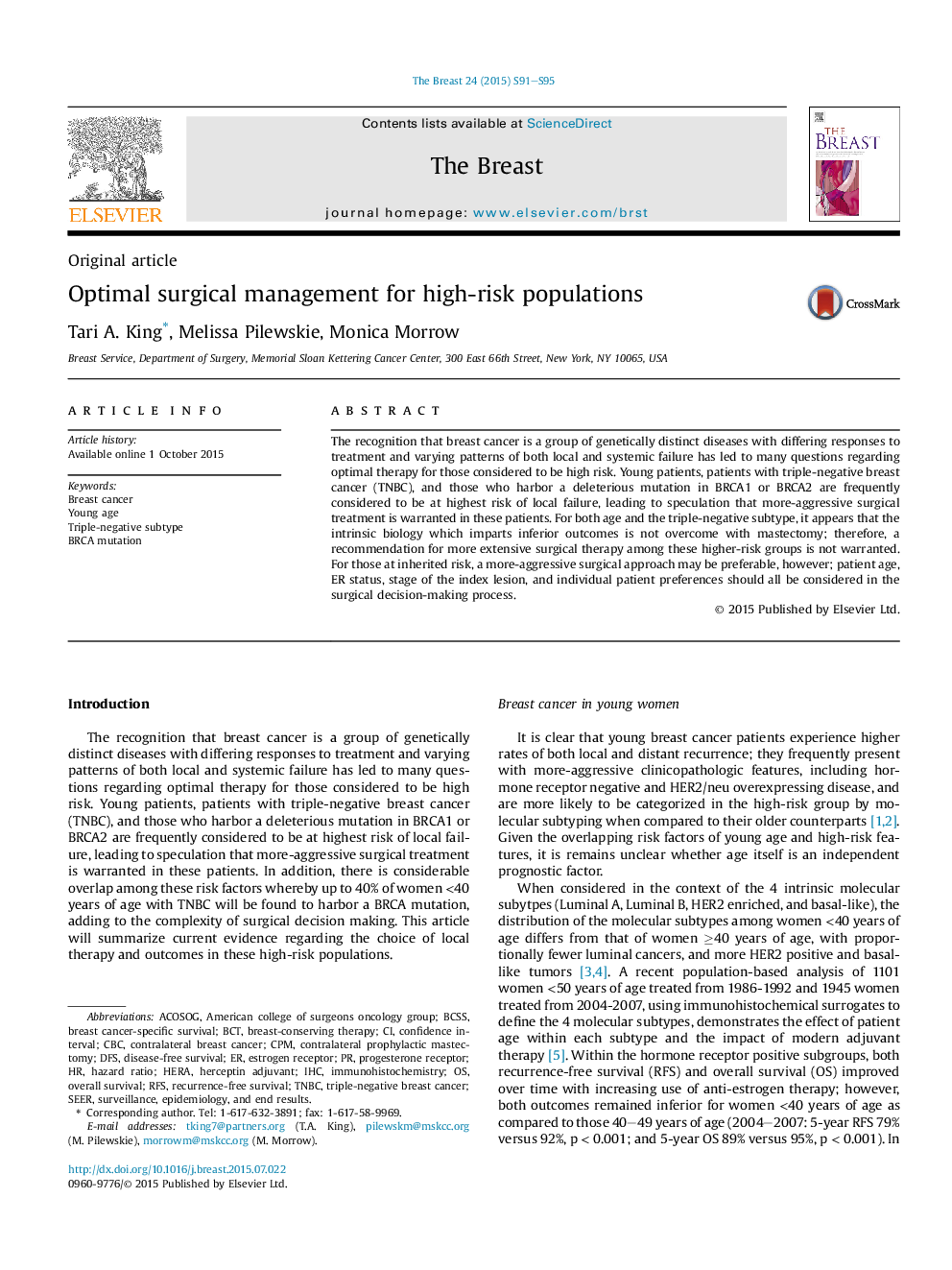| Article ID | Journal | Published Year | Pages | File Type |
|---|---|---|---|---|
| 6169774 | The Breast | 2015 | 5 Pages |
Abstract
The recognition that breast cancer is a group of genetically distinct diseases with differing responses to treatment and varying patterns of both local and systemic failure has led to many questions regarding optimal therapy for those considered to be high risk. Young patients, patients with triple-negative breast cancer (TNBC), and those who harbor a deleterious mutation in BRCA1 or BRCA2 are frequently considered to be at highest risk of local failure, leading to speculation that more-aggressive surgical treatment is warranted in these patients. For both age and the triple-negative subtype, it appears that the intrinsic biology which imparts inferior outcomes is not overcome with mastectomy; therefore, a recommendation for more extensive surgical therapy among these higher-risk groups is not warranted. For those at inherited risk, a more-aggressive surgical approach may be preferable, however; patient age, ER status, stage of the index lesion, and individual patient preferences should all be considered in the surgical decision-making process.
Keywords
BCTCBCTNBCBCSSACOSOGCPMRFSDFSImmunohistochemistryIHCdisease-free survivalRecurrence-free survivalbreast cancer-specific survivaloverall survivalBRCA mutationBreast-conserving therapyBreast cancerTriple-negative breast cancerContralateral breast cancerSEERYoung ageconfidence intervalContralateral prophylactic mastectomyhazard ratioSurveillance, Epidemiology, and End ResultsHERAAmerican College of Surgeons Oncology GroupEstrogen receptorProgesterone receptor
Related Topics
Health Sciences
Medicine and Dentistry
Obstetrics, Gynecology and Women's Health
Authors
Tari A. King, Melissa Pilewskie, Monica Morrow,
